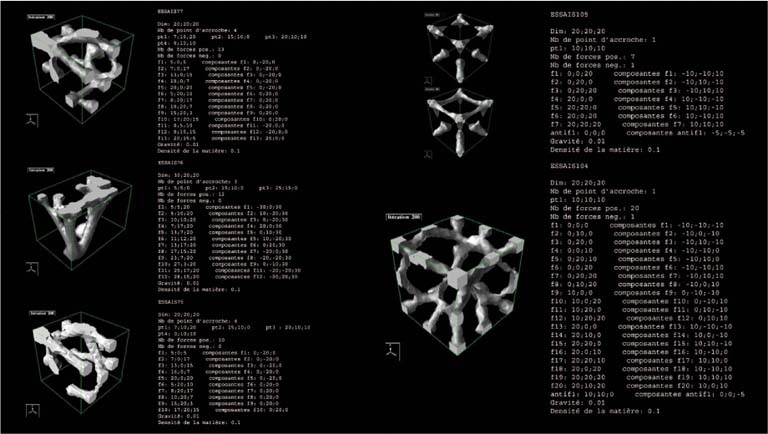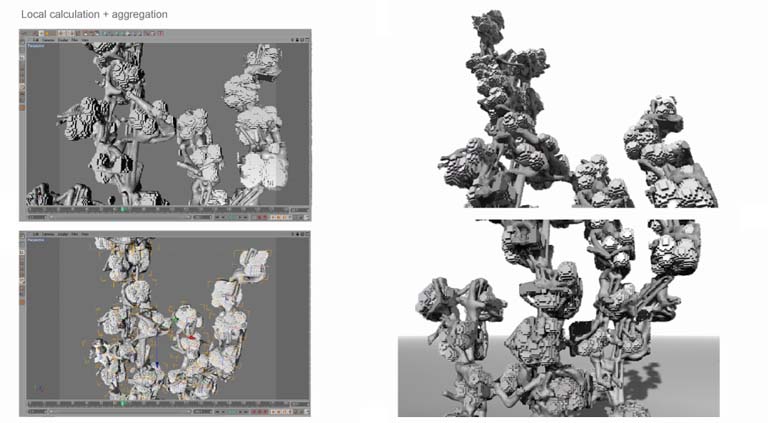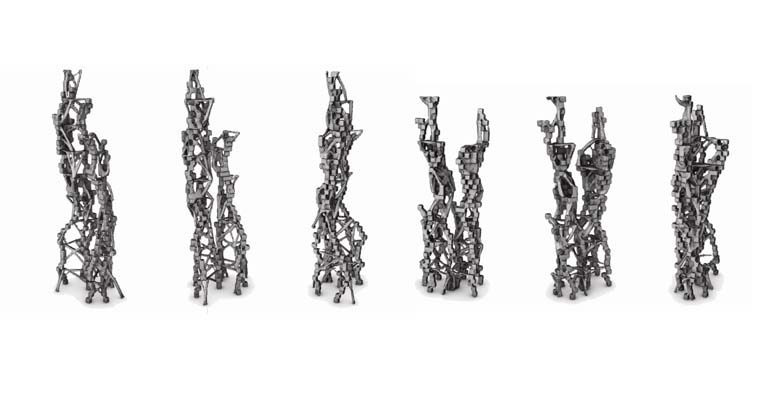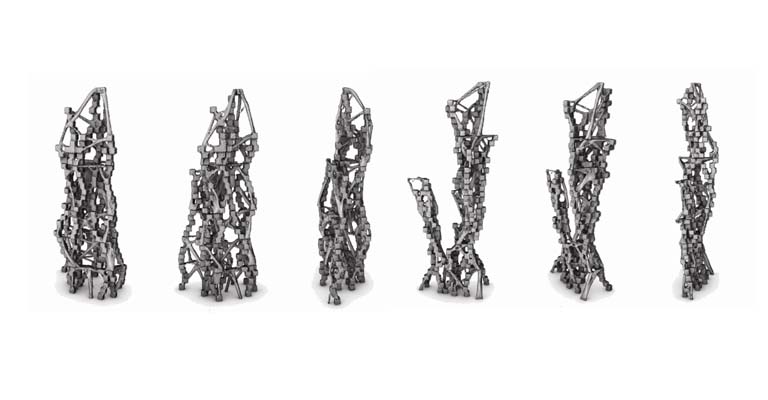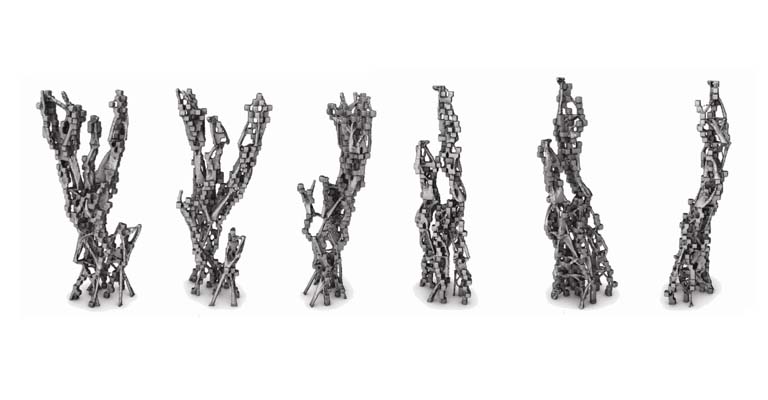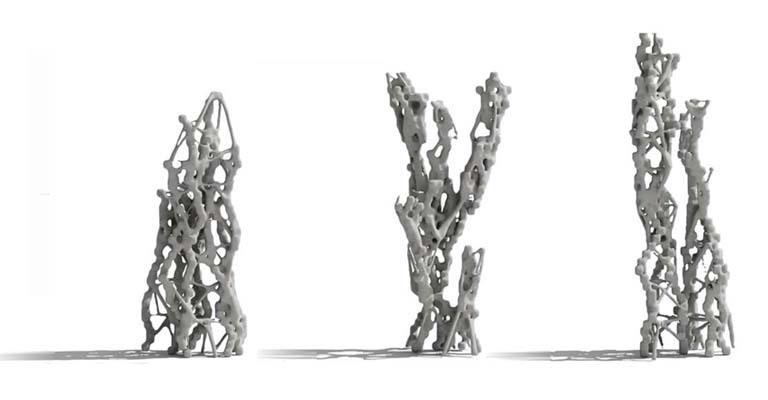This is a mathematical process meant to obtain incremental and recursive optimization (exo-local, local and hyper-local). It simultaneously calculates and designs the structural elements supporting the physio-morphologies. The shapes are made only through successive iterations that join the morphologies by physically and structurally coagulating the space between them, so that they can support each other both individually (local calculations) and as clusters (exo-local calculation). The calculation meets precise inputs (constraints and characteristics of the building material, initial state, deadload and transfer of forces, intensity and vectorization of these forces, etc.).
Calculation parameters
Inputs received via a text file of the morphology (VBnet script running on Grasshopper-Rhino software)
-Position and diameter of the inhabitable spaces (the optimization calculation should go around them but touch them so as to produce structural bonding). They are made up of clusters with a minimum inhabitable volume three meters in diameter
-Position of the vertical distributions (to be stuck into and absorbed by the structural calculation)
-Position of the areas of contact between local and overall calculations, i.e. between the inhabitable morphologies and the overall structure (dead zones)
Forces and constraints taken as system inputs:
-The parameters for the positioning of forces are defined by their contact coordinates (given in x, y and z) on the surface of each “base cube” volume (overall and local forces)
-The parameters for the intensity of forces are defined by the length of the vector
-The parameters for the orientation of forces are defined by the original position of the vector (given in x, y and z)
-Parameterization of avoidance and convergence zones around the habitable clusters
-Parameterization of the contact areas between the local and overall calculations so as to produce structural continuity
-Parameterization of the g-force directly induced by the addition of volumes and the accretion of mass through successive stacking
-Horizontal forces (including wind)
-Vertical forces (inhabitant load, etc.)
-Search and approximation of the volume resulting from the structural material surrounding the trajectories (percentage full/empty) based on the density and mechanical characteristics of the construction material.
Shape optimization
Gravity \ Density
-Iterative developments between the volume of trajectories and density of the substance
-Research and approximation of the volume resultant of structural material around the trajectories (% of solid\void) according to the density and mechanical characteristics of the substance of construction
Protocols of tests on global calculation (areas of contacts, intensity and orientation of the forces, gravity/density)
| click image for movie |
Calculation on physio-morphologies- Local
| click image for movie |









